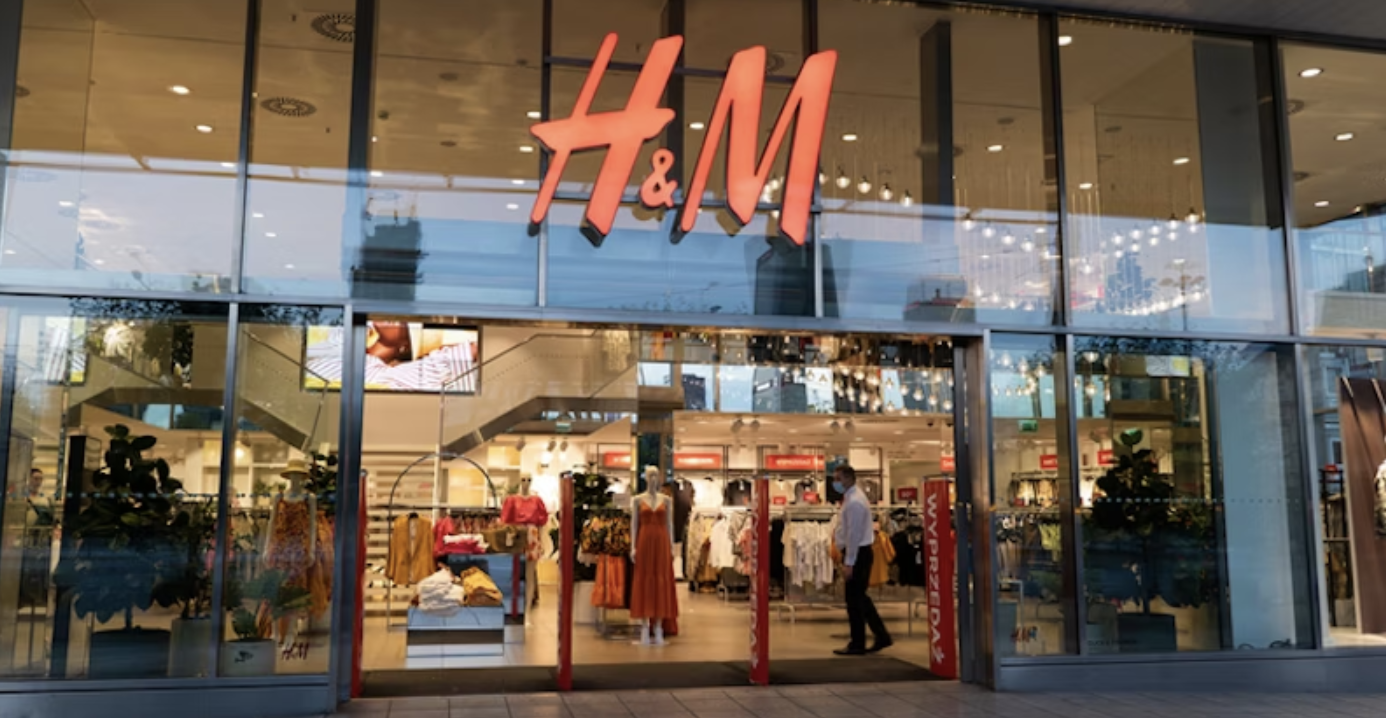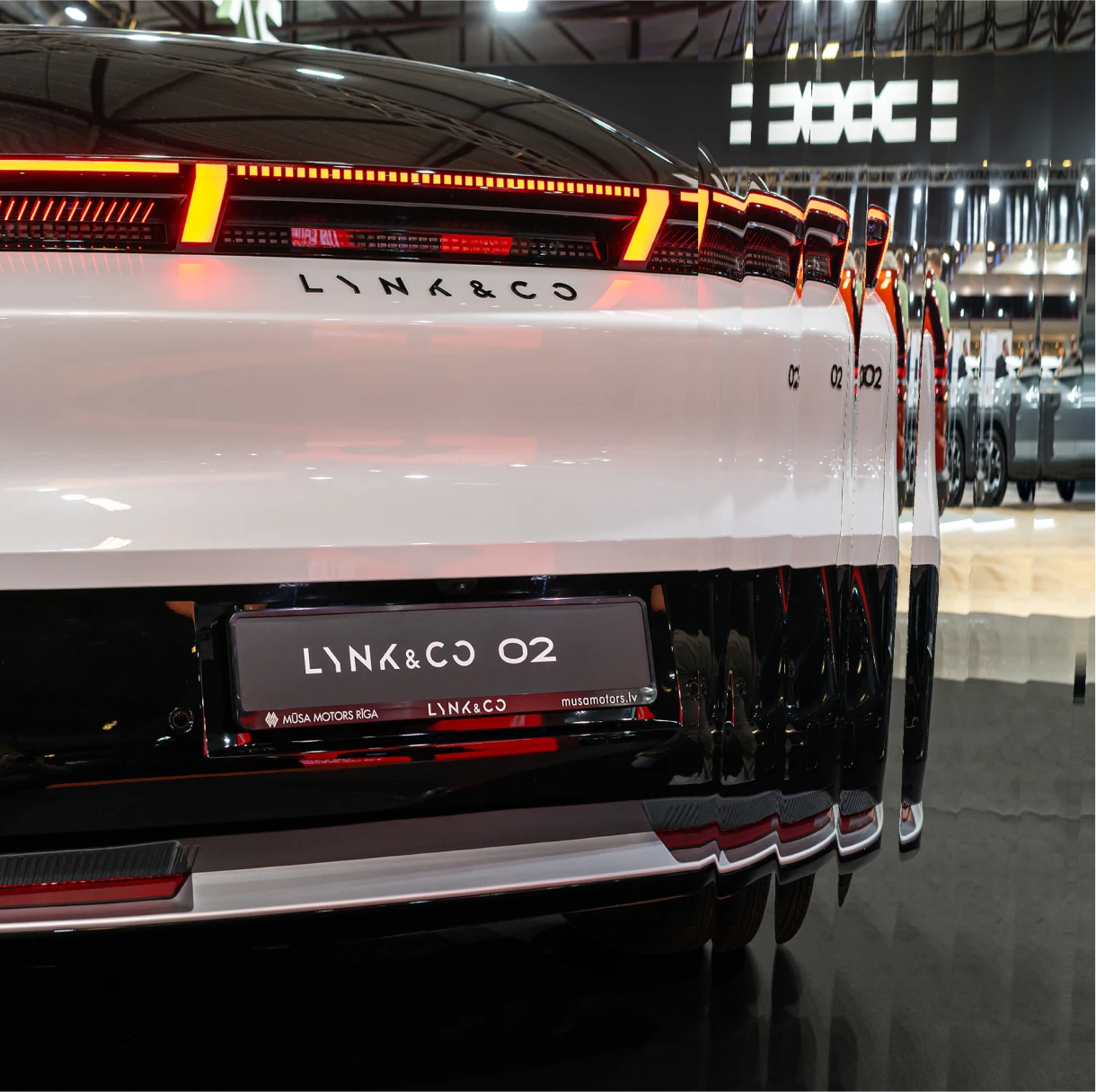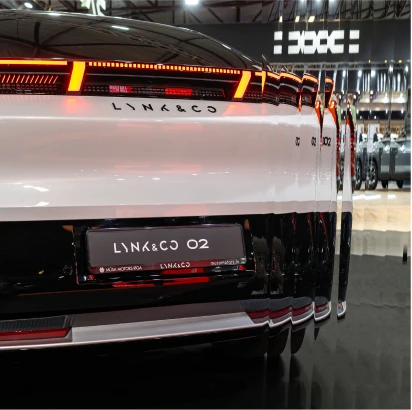Key takeaways
- Joint ventures are strategic partnerships that allow companies to grow faster, share risks, and access new capabilities.
- They can take various forms, e.g., horizontal, vertical, or functional, depending on the nature of the collaboration.
- Companies of all sizes—from startups to multinationals—can benefit from well-structured joint ventures.
- Structured content, clear roles, and mutual trust are key to ensuring long-term JV success.
- JVs are especially valuable in fast-moving sectors like EVs, streaming, fintech, and sustainability.
Companies of all sizes, from startups to established multinationals, are increasingly turning to joint-ventures as a way to drive growth, diversify their portfolio, and gain a competitive edge, in a fast-moving market. And it’s easy to see why.
These partnerships have proven to be an effective strategy for companies looking to enter new markets, develop innovative offerings, test new business models, create new revenue streams and more. Companies that enter into a joint-venture can:
- Share risks and liabilities in large projects
- Lower costs by creating economies of scale
- Boost brand image with reputable partners
- Acquire new skills and capabilities from partner companies
In addition, when executed skillfully, and with the right partner(s), joint-ventures have the potential to deliver results fast compared to starting on venture on your own from scratch.
To give you a better idea of how this strategy can be leveraged to boost growth, we’ve compiled a list of 10 inspiring real-world examples.
But first, let's kick things off with some context.
1. Polaris and Zero Motorcycles
Type: Horizontal joint-venture
In late 2020, Polaris, a leading manufacturer of all-terrain vehicles, joined forces with Zero Motorcycles, an established electric bike developer. The goal? To integrate Zero's advanced electric powertrain technology into Polaris' off-road vehicles and snowmobiles.
Polaris showcased the first tangible results of the venture in December 2021 – the Ranger XP Kinetic (the electric version of their Ranger utility terrain vehicle).

Although Polaris already had an electric Ranger in its lineup, it relied on a lead-acid battery. In contrast, the Ranger XP Kinetic boasts a state-of-the-art lithium-ion battery derived from Zero's cutting-edge EV technology.
The announcement generated significant buzz, resulting in hundreds of millions of media impressions and a surge in site traffic. Preorders for the Ranger XP Kinetic sold out within just two hours of going live.
What made this joint-venture successful?
- Complementary expertise: Each company brought unique strengths. Polaris' vast experience in off-road vehicle design and engineering complemented Zero Motorcycles' innovative electric power technology - resulting in a superior offering.
- Market demand: This joint-venture allowed Polaris and Zero Motorcycles to capitalise on the growing market demand for sustainable options in the electric off-road vehicle space.
- Technological advancements: The partnership enabled the companies to leverage each other's resources to push the boundaries in electric off-road vehicle design and performance.
- Effective marketing: The launch of the Ranger XP Kinetic generated significant buzz, increasing visibility for both brands.
- Shared vision: Both companies shared a common vision for a more sustainable future, focusing on the electrification of off-road vehicles, ensuring a strong foundation for the venture.
2. Deutsche Telekom, Orange, Telefónica, and Vodafone
Type: Horizontal joint-venture

Earlier this year, four major European telecommunications companies, Deutsche Telekom, Orange, Telefónica, and Vodafone, announced a joint-venture to develop a new “privacy-by-design” ad tech platform. The platform, which started off as a Vodaphone project, works by enabling consumers to opt-in or deny communications from brands via publishers with one single click.
The only data shared in the process is a pseudo-anonymous digital token that cannot be reverse-engineered, providing consumers with more control, transparency and protection of their data, which is currently collected, distributed and stored at scale by major, non-European players.
Each company will hold an equal 25% stake in the newly-formed joint-venture, which will be based in Belgium and managed by an independent team under the supervision of a shareholder-appointed supervisory board.
What made this joint-venture successful?
- Synergy: By combining their resources, these companies were able to create a competitive edge that enabled them to challenge established ad tech industry players.
- Innovation: By pooling their resources, these companies were able to provide a cutting-edge solution with better-targeted ads and an improved user experience.
- Data privacy and security: As concerns about data privacy and security escalate, the joint-venture's dedication to creating a transparent and secure platform is a significant advantage, helping to gain the trust of both consumers and advertisers.
- Expanding reach: By collaborating, Deutsche Telekom, Orange, Telefónica, and Vodafone can broaden their reach in the European market, providing a wider audience for advertisers.
3. Spotify and Hulu
Type: Horizontal joint-venture

In 2018, music streaming giant Spotify and streaming platform Hulu joined forces to offer a combined subscription bundle, “Spotify Premium, now with Hulu”, providing users access to both services at a discounted price. The collaboration allowed both companies to expand their user base, enhance customer loyalty, and gain a competitive advantage over rival streaming platforms (e.g. Apple, which offers Apple Music and Apple TV+).
Despite operating in the same industry—streaming services—these companies collaborated to achieve common goals, successfully expanding their user base and achieving growth they couldn’t have reached on their own.
What made this joint-venture successful?
- Expanded user base: The joint subscription bundle made it easier for users to access both platforms, attracting new customers and retaining existing ones.
- Increased customer loyalty: By offering a discounted price for both services, Spotify and Hulu incentivised users to remain subscribed, enhancing customer loyalty.
- Competitive edge: The partnership resulted in a unique value proposition; different from other platforms, providing an edge in the highly competitive streaming market.
- Cross-promotion opportunities: The collaboration allowed Spotify and Hulu to cross-promote their content and services, increasing visibility for both brands.
4. Honda and LG Energy Solution
Type: Vertical joint-venture

In 2022, Honda and LG announced a joint-venture aimed at leveraging LG’s expertise to boost the production of lithium-ion EV batteries for Honda's electric vehicles. Plans include the construction of a state-of-the-art battery plant in Colombus, Ohio, by the end of 2024 and commencing mass production by the end of 2025.
The companies jointly agreed to set up their battery manufacturing facility in the U.S., stemming from their mutual understanding that increasing local electric vehicle production and securing a timely battery supply would optimally position them to tap into the fast-expanding North American EV market. The venture will not only help meet the increasing demand for electric vehicles but also bring significant economic benefits to the region (e.g. 3,000 new jobs in Ohio).
The collaboration illustrates how vertical joint-ventures can enhance supply chain capabilities, foster innovation, and help meet demand in new markets.
What made this joint-venture successful?
- Combined expertise: This partnership allows Honda to build on its expertise in vehicle manufacturing while benefiting from LG's expertise in lithium-ion battery technology.
- Strengthening the supply chain: By pooling resources from both companies, the joint-venture has been able to strengthen the overall supply chain.
- Fostering innovation: The collaboration has resulted in a cross-pollination of expertise that will feed the growing demand for EV vehicles and create profits for both companies.
5. Adidas and Allbirds
Type: Project-based joint-venture
In May 2021, Adidas and Allbirds announced a joint-venture to create a sustainable and eco-friendly concept shoe called “Futurecraft.Footprint”. The new venture combined the sustainability advancements of both companies to make a shoe that required 2.94 kg of CO2 emissions, compared to Allbirds' flagship Wool Runners' carbon footprint of 9.9 kg of CO2 emissions. The shoe's midsole is based on Adidas' Lightstrike technology but is crafted using Allbirds' bio-based sugarcane material.
Unlike many concept projects, the Futurecraft.Footprint transitioned from an idea to a commercially available product by mid-December of that year. Priced at $120, the all-white sneakers quickly sold out, with only some outlier sizes remaining.
What made this joint-venture successful?
- Expertise pooling: The venture brought together Adidas and Allbirds' expertise in athletic footwear and commitment to sustainability to develop a superior product.
- Shared values: Both companies shared a common goal of promoting sustainability and reducing their carbon footprint, making the collaboration more focused and effective.
- Market differentiation: The companies differentiated themselves in the crowded athletic footwear market by offering unique products that cater to environmentally conscious consumers.
- Positive brand association: Adidas and Allbirds benefited from the positive association of their respective brands, enhancing their reputation for environmental responsibility.
6. Geely and Volvo
Type: Functional-based joint-venture

LYNK & CO is an automotive joint-venture between Geely Auto Group and Volvo Car Group, aimed at challenging the established automotive industry by catering to the needs of a new generation of connected consumers. With LYNK & CO, customers can choose to borrow, buy or subscribe for access to a car with added services that include insurance, maintenance and more. The process of choosing a car is simple, with two options of hybrid motor available as well as a myriad of fun high-tech details customers can add.

Since its inception, LYNK & CO has delivered over 600,000 vehicles to users, setting new records for growth among global automotive brands. In Europe, the brand continues to expand with seven permanent Lynk & Co Clubs in the Netherlands, Sweden, Belgium, and Germany, as well as numerous pop-up experience centres. There are also plans to expand to the US in 2024.
What made this joint-venture successful?
- Combined expertise: The joint-venture blends Geely's understanding of the Chinese market and cost-effective manufacturing capabilities with Volvo's proficiency in safety, quality, and design.
- Unique sales and ownership models: The brand's offering includes sharing possibilities, personalised services, and an open API, setting it apart from traditional automakers.
- Global scale potential: LYNK & CO's expansion in Europe and plans to enter the US and Asia-Pacific markets demonstrate its potential for growth and global appeal.
- Sustainability: The brand's commitment to offering an electrified lineup aligns with the worldwide shift towards sustainable mobility.
7. Sony and Honda
Type: Functional-based joint-venture

Sony and Honda announced a new electric vehicle (EV) joint-venture, Sony Honda Mobility,
earlier this year at the CES 2023. The collaboration aims to create innovative and advanced EVs by combining Sony's expertise in AI, entertainment, and VR technology with Honda's automotive manufacturing capabilities and experience. Their first prototype, the "afeela," is designed to deliver an unparalleled in-car experience with a focus on entertainment, connectivity, and comfort.
With over 40 sensors, including cameras, radar, ultrasonic, and lidar, integrated throughout the vehicle's exterior, Afeela's ability to detect objects and drive autonomously will be significantly enhanced. As explained by Sony Honda Mobility CEO Yasuhide Mizuno:
“Afeela represents our concept of an interactive relationship where people feel the sensation of interactive mobility and where mobility can detect and understand people and society by utilising sensing and AI technologies”.
Preorders are expected to open in 2025, and the EV will be sold first in the US in 2026, with plans for expansion to Japan and Europe at a later date.
What made this joint-venture successful?
- Complementary expertise: Sony's proficiency in AI, entertainment, and technology, coupled with Honda's extensive experience in automotive manufacturing, resulted in a superior product.
- Innovation: The "afeela," features a large panoramic display, an advanced sound system, and an array of innovative capabilities, pioneering future EV offerings.
- Enhanced experience: The focus on entertainment, connectivity, and comfort sets it apart from competitors and provides a unique experience that appeals to modern consumers.
- Market demand: The new venture is well-positioned to capitalise on the growing global demand for electric vehicles and the shift towards sustainable transportation.
- Strong brand reputation: Both Sony and Honda are well-established and respected brands in their respective industries, which lends credibility to their joint-venture.
8. H&M Group and Remondis
Type: Functional-based joint-venture

In a bid to close the textile loop and promote circularity in the fashion industry, H&M Group partnered with Remondis, a leading waste management and recycling company, to form a joint-venture called Looper Textile Co. The company aims to gather, sort, and sell pre-owned and discarded garments and textiles, maximising their utilisation, reducing waste and minimising their environmental impact.
Owned 50% by H&M Group and 50% by REMONDIS, part of Looper’s goal is to become a provider for companies in the textile resale and recycling sector. Operations are set to start in Europe with plans to save approximately 40 million garments during the course of 2023.
What made this joint-venture successful?
- Shared sustainability goals: Both companies are committed to promoting circularity. Their shared goals provide a solid foundation for a successful partnership.
- Consumer awareness: The collaboration offers a timely and innovative solution that addresses environmental concerns and provides a guilt-free shopping experience for customers.
9. DBS, JPMorgan and Temasek
Type: Functional-based joint-venture

In 2021, JPMorgan Chase, Singapore-based DBS Bank, and Temasek, a Singaporean sovereign wealth fund, announced a joint-venture to create a new blockchain-based platform for cross-border payments, trade, and foreign exchange settlement. The platform, named "Partior," aims to use blockchain and Distributed Ledger Technology (DLT) to reduce transaction times, lower costs, and improve transparency in cross-border payments.
Since its inception, Standard Chartered joined as a backer, and Partior has made strides on its mission to develop a blockchain-based interbank payment network, having engaged with 60 banks across 15 jurisdictions. There are also plans to expand beyond its initially supported currencies (i.e. USD and SGD) to include GBP, EUR, AUD, JPY, CNH and HKD. As explained by CEO Jason Thompson: “Our vision has always been to transform global payments and become the worldwide ledger for Financial Institutions’ value exchange.”
What made this joint-venture successful?
- Technological innovation: The platform leverages blockchain to address inefficiencies in traditional cross-border payment systems, setting new standards for speed and transparency.
- Collaboration across industries: The joint-venture involves key stakeholders from the banking, investment, and technology sectors, fostering a collaborative approach that benefits from diverse perspectives and resources.
10. L'Oréal, Hotel Shilla, and Anchor Equity Partners
Type: Functional-based joint-venture

In 2022, L'Oréal, partnered with Hotel Shilla, a high-end Korean hotel chain, and Anchor Equity Partners, a private equity firm specialising in the Korean and North Asia markets, to launch a new luxury cosmetics brand called "Shihyo."
Shihyo, which means "the wisdom of time" in Korean, focuses on products tailored to North Asian consumers, with a product line that includes facial cleansers, creams, shampoos, and conditioners. The products feature 24 ingredients produced by local farmers and are inspired by the 24 solar subdivisions of the traditional far-eastern calendar. The formulations also feature a patented ingredient called ShiHyo24, a nutrient-rich concentrate infused with fermented rice water and ginseng water.
The first Shihyo store, called Seoul Garden, will open in the coming months inside the Shilla Seoul Hotel in South Korea's capital, Seoul. The brand plans to expand into other countries in the region after its initial launch.
What made this joint-venture successful?
- Combined expertise: The joint-venture leverages the strengths of each partner, combining L'Oréal's beauty expertise, Hotel Shilla’s luxury retail channels, and Anchor’s robust financial business model.
- Local appeal: By incorporating locally sourced ingredients and cultural elements, Shihyo appeals to the unique preferences and needs of North Asian consumers, making it a strong contender in the region's luxury cosmetics market.
- Clean, quality ingredients: High-quality, locally sourced ingredients are highly coveted in the luxury skincare sector, particularly among millennials and Gen Z.
Joint venture FAQs
Q. What is the main benefit of a joint-venture?
Joint-ventures allow companies to combine resources, reduce risk, and enter new markets faster.
Q. How do joint-ventures differ from mergers or acquisitions?
In a joint-venture, companies remain separate entities but collaborate on a shared project. Mergers and acquisitions involve full integration or ownership transfer.
Q. What types of joint-ventures exist?
Horizontal (between competitors), vertical (between supplier and buyer), and functional/project-based (focused on a specific function or innovation).
Q. Can startups benefit from joint-ventures?
Absolutely. Startups can gain distribution, capital, or credibility by partnering with larger firms through JVs.
Q. How do I set up a successful joint-venture?
Start with aligned goals, define roles clearly, ensure legal clarity, and maintain open communication.
Final thoughts
These joint-venture examples demonstrate the power of strategic partnerships in driving innovation, expanding market reach, and achieving business goals. By pooling resources and expertise, companies can unlock new opportunities and overcome challenges, creating a win-win situation for all parties involved.
As the business landscape becomes more global and competitive, joint-ventures will likely continue to play a critical role in fostering collaboration and success across industries.
________________
Are you looking to reach new markets, boost growth and create new revenue through strategic joint-venture initiatives? We can help you find the right partners to bring new ventures to life, increasing your chances of long-term success.
Build an Ecosystem That Drives Shared Value
Go from siloed growth to scalable collaboration with clear roles, shared goals, and actionable frameworks.










